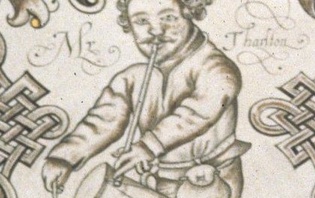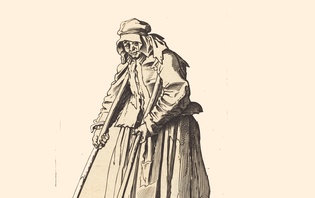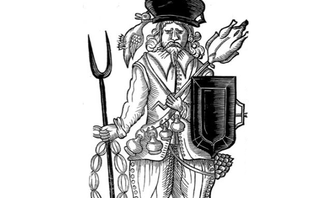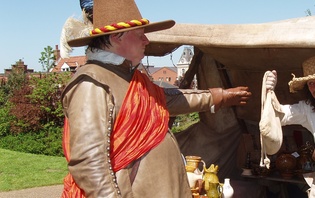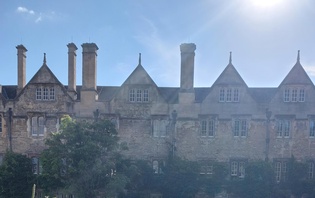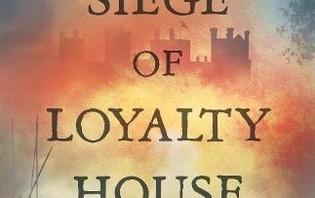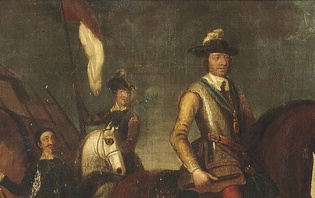‘Members of one another’s miseries’: care in the community during and after the Civil Wars
The Civil War Petitions team expects to collect, transcribe and digitise around 4,500 petitions and certificates by the end of our project, as well as details of around 13,000 more individuals preserved in Quarter Sessions order books and treasurers’ accounts. This will be a huge achievement, but it represents the tip of an even larger iceberg, for it has been estimated that over 90,000 soldiers were wounded in England and Wales, 30,000 in Scotland, and many more in Ireland. The petitions and certificates of many claimants have been lost over the centuries, but it seems very likely that tens of thousands of veterans and war widows made no claims at all. This raises questions as to why so many needy people chose not to petition the authorities, and how they managed without financial relief. Similarly, how were royalist veterans and war widows able to survive during the Commonwealth and Protectorate, and how did their parliamentarian counterparts fare after the Restoration, when the vast majority had their pensions taken away? In this blog, David Appleby suggests that we can start to answer these questions not only by considering the financial sacrifices made by the maimed and bereaved themselves, but also the contributions made by their relatives, friends and neighbours. Many of the petitions and certificates referred to in this blog are already freely available in our online database, whilst other documents – such as those from Staffordshire and Northamptonshire – are currently in the queue waiting to be uploaded; so please do continue to visit our home page regularly to check out the latest additions!
It is a truism that war brings out the best and worst in people. Previous blogs in this series have shown how bitter divisions continued to blight communities for decades after the fighting had ceased, but as other blogs have demonstrated there is also ample evidence to show that communities and families rallied round to help those maimed, bereaved and orphaned by the conflict.
As we have seen, many of the petitions featured in the Civil War Petitions website were submitted by communities on behalf of individuals from their neighbourhood. These documents have often been interpreted as a cynical ploy by parishes to offload the financial burden onto the wider county community. This may have happened in some instances, but it is evident that many parishioners were genuinely moved by the plight of neighbours who had suffered serious injury or bereavement. Parnell Heacock told Staffordshire justices in July 1642 that, with her soldier husband missing in Ireland, she had sought the support of her ‘good friends and neighbours’. After Heacock had been sent to a house of correction for vagrancy, no less that forty-seven men and women from her home village of Sherrifhales came forward to attest to her good character, and to assert that she was deserving of financial relief [Staffs Archives, Q/SR/253, fol. 33].
Such solidarity often carried weight with local authorities: in April 1644, the same justices learned of the troubles of Elizabeth Warrilowe, who had accompanied her husband John on campaign in Ireland. John had been badly wounded on two occasions, and hospitalised in Dublin. In the course of being repatriated, the family had been shipwrecked off the coast of Wales. This proved fatal for John Warrilowe, who in his severely weakened physical state was unable to survive the ordeal. His demise left Elizabeth with the difficult task of getting her children safely back to Staffordshire. The fact that she managed to complete this arduous journey, and received a warm welcome in her home village of Caverswall, impressed the county magistrates so much that they commended everyone involved, ‘not doubting that in so charitable a work (as feeling members of one another’s miseries) they will, in all places where the petitioner shall come, afford her their charitable benevolence, which will be acceptable to Almighty God, and [a comfort] to her and her poor children.’ [Staffs Archives, Q/SO/5, fol. 209]. Similar solidarity is evident in Abergele in Denbighshire, where the widow Luce verch John and her children would have starved had it not been for ‘the charitable devotion of their neighbours’.
In the eyes of contemporaries people qualified as ‘deserving poor’ either by unavoidable impotency (widows, orphans and the elderly) or through becoming a casualty (maimed soldiers). However, it is very evident that it was also important to have been respected in one’s community before the onset of such misfortune. Communal petitions invariably emphasise that this widow had ‘lived in an honest rank’ or that veteran had previously been ‘a very painful, industrious, honest, poor man’. Self-reliance was a vital element in establishing a reputation as a good neighbour, not least because many early modern communities lacked the resources to support a large number of indigent poor. Those who became burdensome to the community had therefore traditionally run the risk of being exiled to its margins; a risk which increased after 1642, as local economies were bled dry by the opposing sides’ need to maintain their respective war efforts. This is exemplified in the petition of Ann Fookes, who was clearly nervous of becoming a burden to her friends in Halstead, ‘they being poor people’, and explains why others such as Parnell Heacock were so fearful of being thrown onto parish charity, or (even worse) forced to beg. Petitioners very often attempted to convince county justices of their suitability for a pension by outlining the measures they had previously taken to avoid applying for aid: Heacock, for example, had attempted to eke out a meagre living by selling candles [Staffs Archives, Q/SR/253, fol. 33; ERO Q/SBa2/82], whilst Mary Buckley of Wrexham had pawned all her worldly goods in a desperate attempt to provide for her children.
Orphans, being too young to enter a trade or raise a loan, were particularly vulnerable. However, children habitually elicited considerable sympathy within communities, as it was widely recognised that they were most definitely innocent victims. Samuel Barker, a widower, had brought up his son on his own, but when he was killed defending Trent Bridge fort against the royalists in April 1645, the infant was left with no relatives in the world. Fortunately, he was taken in by Margaret Cooke, wife of the quartermaster of Nottingham garrison. When Northamptonshire war widow Joane Willmot died in 1659, her orphaned children did at least have relatives to whom they could turn. One of their grandmothers was still alive, and undertook to look after them [Northants Archives QSR 1/11, fol. 95]. Other children were not so lucky. A particularly tangled tale involves the children of Robert Welden, a parliamentarian gunner, killed by the accidental discharge of an artillery piece in 1651. Welden had been a poor day labourer in civilian life, and left his wife and three children deep in debt. Staffordshire’s clerk of the peace recorded in the sessions’ order book that two of these children were the offspring of an earlier marriage. Robert Welden had thought ahead, and had at least made provision for his youngest child, by obtaining his brother-in-law’s agreement to act as a foster parent in the event of his death. In return, the brother-in-law, Thomas Heeley accepted some goods and a small sum of money. Welden’s widow Lettice first applied to the Staffordshire quarter sessions for a pension, possibly in an effort to keep the family together, but it is unknown whether her application was successful. She was certainly still desperate for money, and approached Thomas Heeley to request that he support the youngest child as arranged. Heeley, however, refused to keep his word. The aggrieved widow promptly complained to the Staffordshire justices, who ordered Heeley to pay £8 towards the child’s upkeep [Staffs Archives Q/SR/274, fol. 6; Q/SO/5, fol. 451]. The story becomes even more complicated with the petition of Thomas Wood just over three years later. Wood, a resident of Abbot’s Bromley, was either a good friend of the late Robert Welden (he certainly knew a lot about him), or simply an exceptionally kind neighbour. He observed that two of the children were both motherless and fatherless, and the youngest ‘quite helpless, and utterly destitute of succour or releife’. Unlike Heeley, Wood was not a family relative, but took it upon himself to adopt one of the children, purely (as he put it) out of ‘tender commiseration and pity’. The only reason we know of this extraordinary gesture was because it proved so costly that Wood was forced to petition the Staffordshire quarter sessions in January 1655, seeking money for the child’s continued maintenance [Staffs Archives Q/SR/289, fol. 3]. Whatever the explanation for the contrasting attitudes of Wood and Heeley, the case certainly stands as a good example of the hidden human cost of the civil wars.
The exceptional loyalty and devotion of the Cooper (or Cowpe) family in Staffordshire encapsulates most of the issues raised by this blog. In the days of peace, the head of the family enjoyed the respect of his neighbours in Onneley, a small hamlet lying in the parish of Madeley, near to Newcastle-under-Lyme. Cooper had a life interest in what appears to have been a profitable farm or smallholding, described as ‘a pretty tenement’. Cooper’s son, Raphe was farming just over the county border in Cheshire when civil war broke out in England.
Like so many others, Raphe was quickly sucked into the conflict, and found himself serving as a foot soldier in the company of Captain Matthew Wright, part of Sir William Brereton’s Cheshire army. It was Raphe’s misfortune to be trapped with a number of other parliamentarian soldiers and villagers in Bartholomley church in December 1643. Although only a minor action, the royalist massacre of the church’s defenders quickly became one of the most notorious incidents of the Civil Wars. Raphe survived, but ‘by the strong hand of the enemy’ lost his right arm, his right eye and – even more critically – was paralysed by a broken back. It is not recorded how his family heard of his plight, nor the means by which he was transported to his father’s ‘pretty tenement’; but in taking him back to Onneley the family had taken a terrible burden on itself. Raphe was effectively a quadriplegic, and would require constant care for the rest of his life.
Raphe was noted as being not able to move ‘any further than he is carried by friends’. For the next six and a half years, the maimed soldier’s father and sister became his full-time carers. The modest profits of their ‘pretty tenement’ were insufficient to cover their needs. By the time Raphe’s father died in 1650, the family had run up enormous debts. Following his death, nervous creditors immediately began to demand repayment, whilst the landlord compounded the family’s troubles by claiming his traditional ‘heriot’. This was the fee for transferring the leasehold of the property from father to son. It is possibly that the landlord was hoping for Raphe to default, as this would then have allowed him to evict the Cooper siblings, and rent out the property to an able-bodied farmer. Raphe now had no alternative but to apply for financial assistance. There is no mention of him applying for parish relief, but he certainly petitioned the county justices. In the course of his petition, the maimed soldier gave due credit to the devotion of his sister, stating that she had carried him ‘up and down upon her back, and hath done what she can for him so long as she is able’. Eighteen neighbours signed the petition to certify the truth of Cooper’s story [Staffs Archives Q/SR/268, fol. 7].
Raphe was possibly at a slight disadvantage by virtue of the fact that Onneley lay at the margins of Madeley parish; his application was on even shakier ground by virtue of the fact that he had officially been settled in Cheshire at the time of the Bartholomley incident. The Staffordshire justices noted his last official abode in their order book, and emphasised that ‘by ordinance of Parliament he ought to be relieved in the county of Chester where he was last settled before he took up arms’ [Staffs Archives Q/SO/5, fols. 339-340]. In 1647 these same justices had been involved in a very similar wrangle with Warwickshire authorities over which county should give financial relief to another badly injured soldier, Corporal Peacocke [Staffs Archives Q/SR/260, fols. 1, 2]. However, in Raphe Cooper’s case the injuries were so severe, and the family so obviously deserving of charity, that the justices clearly took pity on him. Cooper and his sister were awarded a county pension, and the justices ordered that this should be augmented by a further payment of 12d. per week from the churchwardens and overseers of the poor of Madeley. The prompt and generous decision of the Staffordshire bench does at least show that the justices were sometimes able and willing to disregard legal technicalities in order to be fair to a family which had done its very best in exceptionally difficult circumstances.

